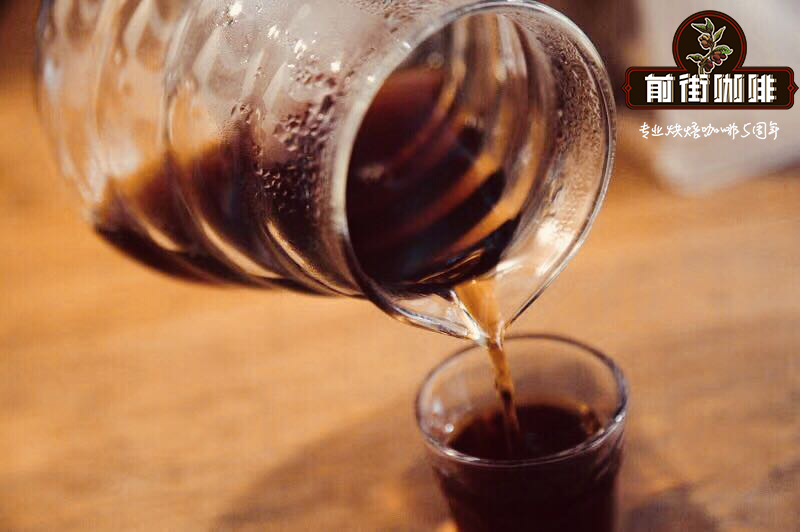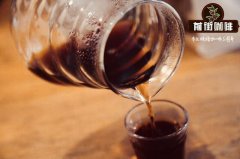Three-knife flow of hand-made coffee to save your trembling hands

Professional coffee knowledge exchange more coffee bean information please follow the coffee workshop (Wechat official account cafe_style)
Introduction of segmented extraction of Qianjie-hand Coffee
In addition to going to cafes to taste the craftsmanship of professional baristas, more and more people are willing to try to make coffee themselves. The aroma of the freshly ground coffee is so charming, put on a favorite piece of music, give yourself or entertain one or two close friends, slowly pour into a pot, think that the little life is really beautiful.
So today, we will give you a simple and easy guide on how to use hand brewing to make a pot of delicious coffee. The method adopted is the three-stage water injection cooking of the academic school, and the jianghu people say: "three knives flow".
Ha. Mom doesn't have to worry about my coffee anymore.
Step 1: prepare appliances and materials
First of all, prepare fresh coffee beans (nonsense, what kind of coffee do you make without coffee beans? ) the coffee is made with roasted cooked beans, and the freshness is usually calculated from the baking time. Beans suitable for hand-brewing coffee are generally believed to be best baked within one month, and try not to use beans for more than three months.
Freshness and shelf life are two concepts! Two concepts! Two concepts! Say the important words three times.
It is perfectly possible that well-packaged coffee beans will not go bad for a year or two. But the shelf life is only to ensure "safety", to be "delicious", coffee beans must be fresh enough. Then we need some tools for making coffee: grinders, hand pots, filter paper for filter cups, thermometers and timers, and sharing pots for production (of course, it is also your freedom to use a large sea bowl to hold coffee. ).
Step 2: prepare to cook
Grind 14-18 grams of coffee beans (1-2 servings) into a sugar-like coffee powder. Brewing coffee under the same conditions, the coarse powder will taste light and sour, and if the powder is too detailed, it will taste heavy and bitter.
Boil hot water, and when preparing to make coffee, the temperature of the water is about 88-94 degrees Celsius. If you use coffee beans that are deeply roasted, or if you don't want the taste to be too heavy and bitter, try using a slightly lower water temperature. Conversely, the coffee beans are relatively shallow, or if you want to prevent the coffee from becoming light and sour, you can choose a higher water temperature.
Arrange the filter cup and sharing pot, install the filter paper on the filter cup and wet it with hot water. The purpose of this is to make the cup filter paper fit tightly and preheat the appliance at the same time.
Step 3: steaming
Carefully pour the ground coffee powder into the middle of the filter paper, gently pat flat, then start the clock, pour hot water from the center of the powder pile, quickly circle and continue to inject it, do not leave dry powder on the surface of the whole powder pile. Not too much water this time, about twice the amount of hot water injected into the powder.
If your coffee beans are fresh enough, you should be able to observe that the coffee powder expands into the shape of a hamburger after pouring hot water (lightly roasted coffee is not easy to appear).
When the hamburger stops expanding and the surface begins to dry, it means that the coffee powder has been fully infiltrated and vented and can be officially brewed. Generally speaking, it takes about 30 seconds from the first drop of hot water to touch the coffee powder to the hamburger to fully exhaust.
Step 4: formal brewing
Planned amount of water: a total of 14,18 times the weight of powder should be injected with hot water, including steaming. If there is more water, the coffee is light, and if there is less water, the coffee is thick and bitter. It is suggested that 15 or 16 times the amount of water can be used at the beginning, and the concentration of coffee is relatively moderate and can be accepted by most people. Or inject from the center, and then quickly expand the ring to add water. Subtract the total weight of hot water to be injected into the plan minus the amount of water used for steaming, and divide it by three, which is the amount of water to be poured each time.
After each water injection is completed, stop for a moment, and wait for the water level to drop slightly before starting the next water injection. Be careful that the current does not break through the powder wall close to the outermost filter cup. After three times of water injection, observe the water surface. If you find that the foam of the coffee oil has dispersed, revealing the clear liquid, you can consider removing the filter cup and discarding the tail section. It takes a little more than two minutes from the first drop of hot water to the coffee powder to the last drop of liquid falling into the sharing pot.
Well, the above is the operation flow of the three-knife flow brewing method, you can try it yourself, and then share the delicious coffee with your friends!
Knowledge point: it is richer than a knife stream, and it can clarify the flavor of the front, middle and back of the coffee. The method is to increase the amount of water injection each time after steaming, usually when the coffee liquid is about to drop to the surface of the powder layer, and use small, medium and large water flow to do three-stage extraction.
In short: Qianjie is a coffee research hall, happy to share the knowledge about coffee with you, we share unreservedly just to make more friends fall in love with coffee, and there will be three low-discount coffee activities every month. The reason is that Qianjie wants to make more friends drink the best coffee at the lowest price, which has been Qianjie's tenet for 6 years!
END
Important Notice :
前街咖啡 FrontStreet Coffee has moved to new addredd:
FrontStreet Coffee Address: 315,Donghua East Road,GuangZhou
Tel:020 38364473
- Prev

The origin of cold-extracted coffee is which country is suitable for novices to make cold-extracted coffee beans with various flavors
Professional coffee knowledge exchange more coffee bean information please follow the coffee workshop (Wechat official account cafe_style) front street-Cold extract Coffee maker introduction the earliest documented cold extract coffee originated in the Netherlands. In the 17th century, the Netherlands became very powerful at sea, with the best crew and shipbuilding skills in the world, even surpassing the position of maritime overlord England.
- Next

There are several methods of brewing coffee with one knife and one knife is the highest level of coffee learning.
Professional coffee knowledge exchange more coffee bean information please follow the coffee workshop (Wechat official account cafe_style) front street-hand-brewed coffee one-knife extraction introduction one-knife flow. Complete the cooking with a single injection of water. Coffee powder is constantly soaked in water to fully release the aromatic substances in the coffee powder. The amount of water injection is controlled to achieve the whole stage of extraction without destroying the overall balance. One-size-fits-all cooking, different
Related
- Beginners will see the "Coffee pull flower" guide!
- What is the difference between ice blog purified milk and ordinary milk coffee?
- Why is the Philippines the largest producer of crops in Liberia?
- For coffee extraction, should the fine powder be retained?
- How does extracted espresso fill pressed powder? How much strength does it take to press the powder?
- How to make jasmine cold extract coffee? Is the jasmine + latte good?
- Will this little toy really make the coffee taste better? How does Lily Drip affect coffee extraction?
- Will the action of slapping the filter cup also affect coffee extraction?
- What's the difference between powder-to-water ratio and powder-to-liquid ratio?
- What is the Ethiopian local species? What does it have to do with Heirloom native species?

